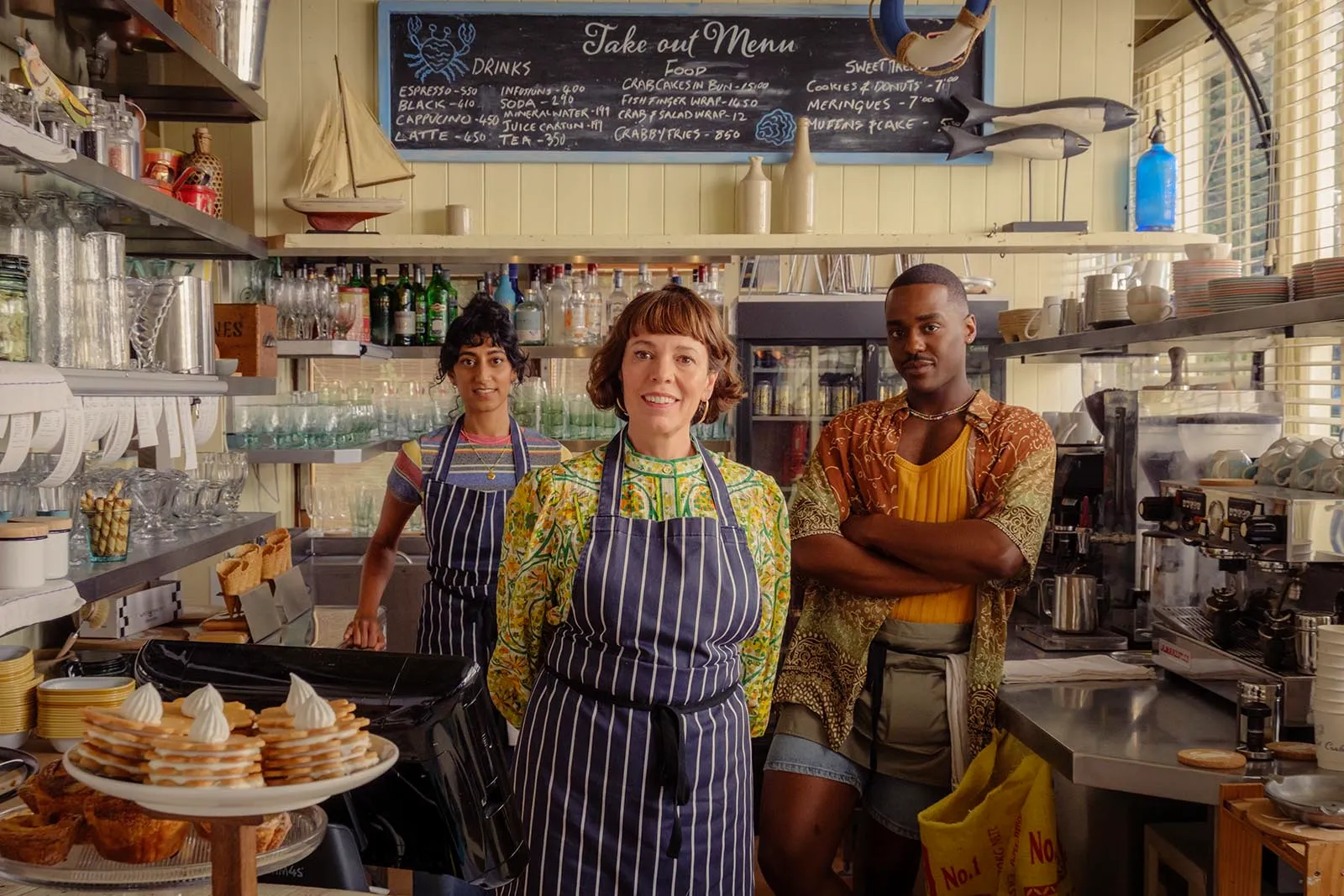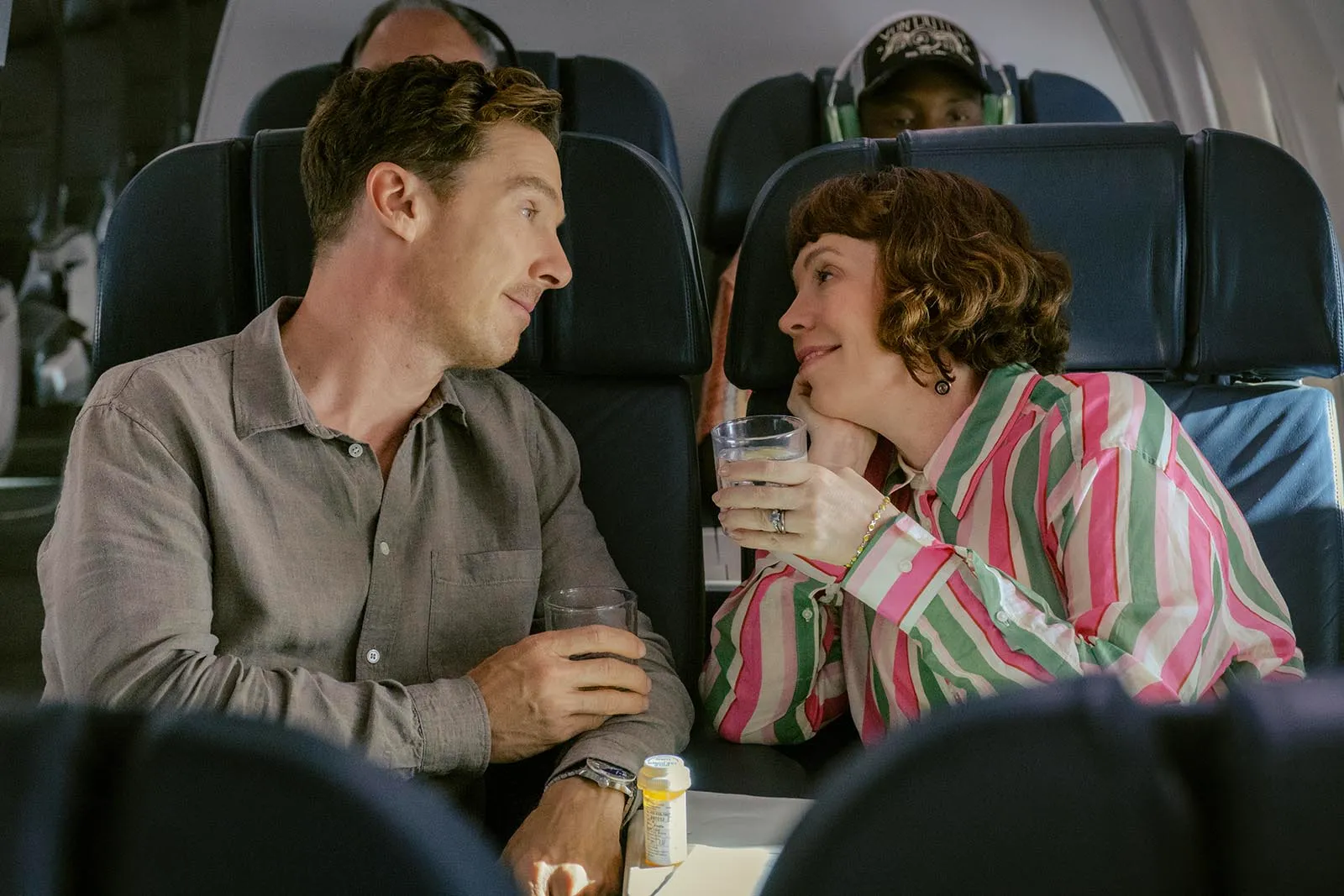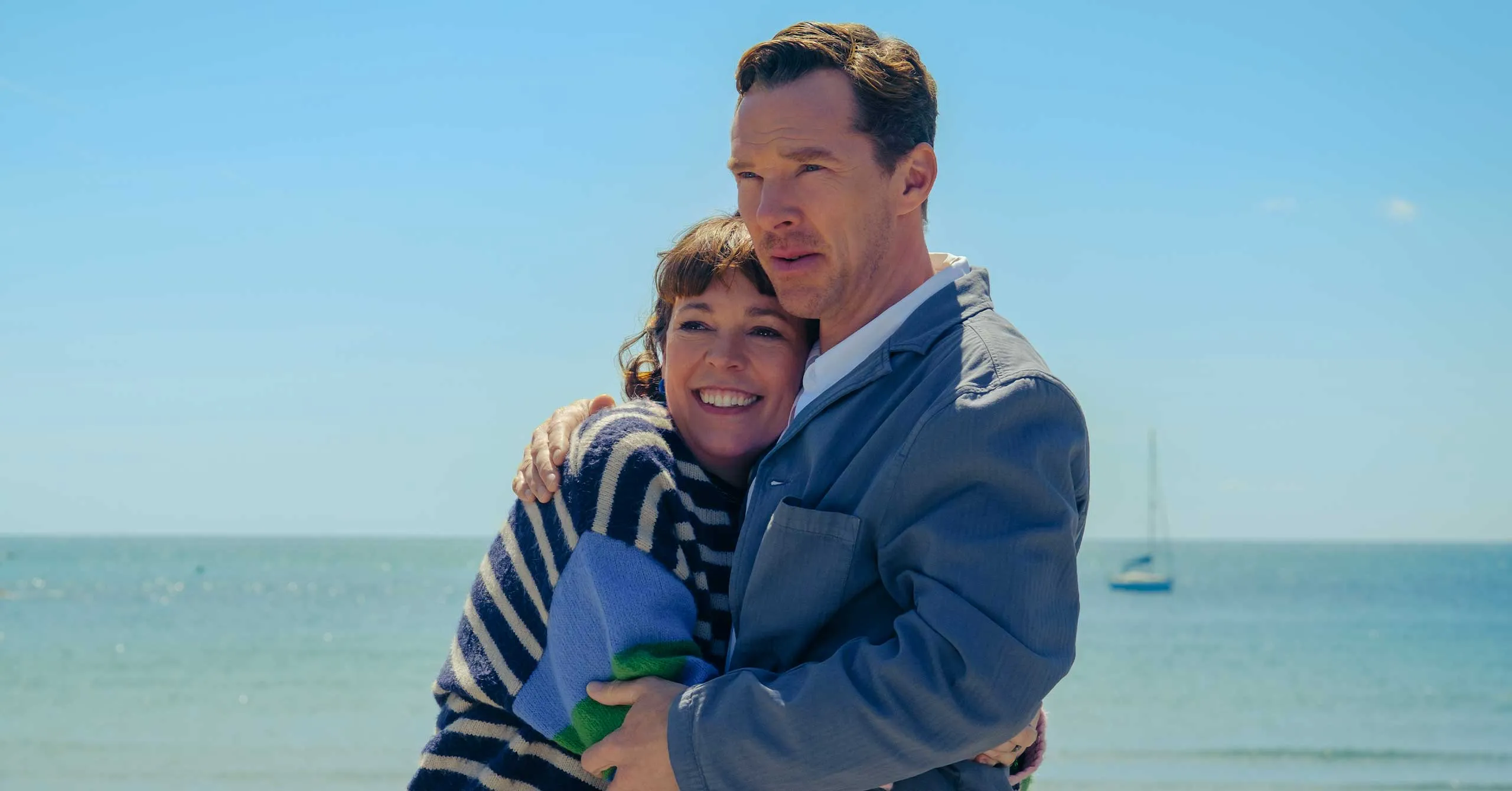Ivy Rose, a brilliant and ambitious chef who rises to fame with her restaurant We’ve Got Crabs, finds her marriage tested as Theo Rose, an architect whose career collapses, is left to navigate stay-at-home parenting and spiraling resentment. Courtesy of Searchlight Pictures
Ivy Rose, a brilliant and ambitious chef who rises to fame with her restaurant We’ve Got Crabs, finds her marriage tested as Theo Rose, an architect whose career collapses, is left to navigate stay-at-home parenting and spiraling resentment. Courtesy of Searchlight Pictures
To PC Williams, clothes tell the story. In The Roses, they map the shifting terrain of desire, dominance, and disintegration.
When Olivia Colman and Benedict Cumberbatch face off in The Roses, a darkly comic marital drama directed by Jay Roach and written by Tony McNamara, the war begins not just in words but in clothes. A modern reimagining of the 1989 classic The War of the Roses, the film turns the disintegration of a marriage into a satire of love, ambition, and power.
At the center of this intricate visual storytelling is BAFTA-winning costume designer PC Williams, who approached the project with equal parts precision and play. “I’ve been a fan of Tony’s for such a long time, so when the script came through I was really excited to read it. I responded so positively to what Jay Roach wanted to do with the text and I knew that with Olivia and Benedict in the leading roles, it was bound to be beautiful.”
Williams’ love for fashion began long before her first film set. “I think it is impossible to have Nigerian lineage and not be interested in fashion, it’s a tool we use in our everyday life as well as historically to communicate who we are to others. I like to think of us as peacocks… The individual sense of style on display is always second to none. So I guess I was raised with this notion of self-expression through clothing from a very young age.”

At Central Saint Martins, she thought she might be a fashion designer, but soon realized she was more interested in the stories clothing told. “I loved what clothes would tell me about a person, how clothes could change the way an image was received, and the emotional layers that it could bring to a quiet moment. I also really enjoyed working collaboratively with other craftspeople, so I started in styling and then transitioned to narrative film and TV.”

Her earliest inspirations were close to home. She remembers her mother and her friends who “didn’t have loads of cash but they all had so much style,” and a formative trip to the cinema with her father: “I remember my dad taking me to the cinema to watch Hackers and just feeling like my mind had been blown visually; the costumes in that film were so good! The world felt so real and so futuristic, all at the same time.”
Ruth E. Carter’s work in What’s Love Got to Do With It left her jaw on the floor, while Clueless sent her home sketching her own costume designs. “Overall, I would say life is what continues to shape my aesthetic. All these crazy experiences I got to have as a stylist, or on my first ever feature film, they taught me what I don’t like, what I wanted to explore further, what I felt was the next challenge I needed etc. The journey is full of inspiration.”

Her career has been defined by the strength of her collaborations. “An important part of my journey has been my collaboration with director MJ Delaney and production designer Soraya Gilanni, who I went to school with… Getting to learn your craft alongside your friends is a privilege because you give each other grace. Grace to both succeed and fail.” She went on to work with director Nida Manzoor on We Are Lady Parts and Polite Society, a partnership that won her a BAFTA. On The End We Start From, she challenged herself to design stripped-back survival wear, relying heavily on texture rather than color. And with Back to Black, she turned to instinct. “I had to lean into my gut and understanding of who she was to me and present that version of Amy Winehouse to the world.”
With The Roses, Williams delivered some of her most nuanced work yet. She wanted to reflect the shifting power between Colman’s Ivy and Cumberbatch’s Theo not by swapping their styles but by evolving them. “I wanted to portray the shift in dynamics through their costumes. It was important to me that it wasn’t a swap in styles, rather an evolution in styles.” Ivy begins in a wardrobe that is “quirky, playful and colorful—just like her cooking—but as she becomes more successful professionally, we polished it up a bit and leaned a little more into her feminine aesthetic.” Theo, meanwhile, “viewed clothing as functional rather than expressive. He begins oozing quiet luxury and as he becomes more domestic, his sense of style remains modular but there’s a practicality to the items he wears.”

Sourcing was key to achieving this authenticity. “I sourced a lot of Olivia’s jewelry from local artisans I discovered at various vintage fairs in London, including Felt (based in Amsterdam) and Regine De La Hey (based in London).” Her clothing came from Stine Goya, Natasha Zinko, Lisou, Plumo, Raey, Soeur, Leem, Desmond & Dempsey, and Dries Van Noten, with embroidery added in Williams’ studio “to make them feel a bit more personal and specific to her.”
For Theo, she collaborated with Bremont for watches and dressed him in labels like NN.07, A Day’s March, Mr P, Folk, Sunspel, Oliver Spencer, James Pearce, and Loro Piana. “He did get a custom-made tracksuit for him and the kids for one scene, which was really fun to design.” For the ensemble, she combined contemporary brands with vintage thrift finds “to enable the character to feel true.” Williams says that the atmosphere on set often reflected the humor of the story. “There were days on that job that we laughed so much, that you almost forgot you were at work. I really hope people are drawn to it and that they love it as much as we do.”

Yet, beneath the playfulness lies a clear sense of guidance for the next generation. “Don’t try to copy anyone else. There’s only one person who interprets the world the way you uniquely do, and that is you. You have something to offer! Most things can be taught, except for passion, so as long as you have that, you have a chance. Collaborate with your friends! Sometimes people wait for the big opportunities, but there are opportunities right there next to you; utilize them. Grow as a community, it’s much less lonely than doing it all alone.” For Williams, costume design is both craft and privilege: “Have fun! We get to play dress up for a living, what a privilege!”
